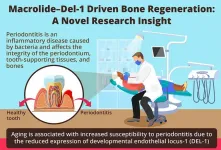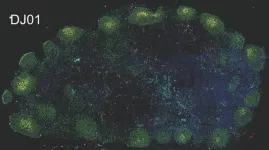(Press-News.org) According to a new analysis, almost a quarter of Australians with disabilities smoke when compared to just 12.6% of the wider population.
While the number of Australians smoking is declining, the barriers for people with disabilities mean targeted support is needed to develop healthier habits.
Flinders University and Cancer Council NSW health experts are recommending new strategies to tackle the alarming smoking rate through targeted government policies, data collection on smoking and training for disability support workers on tobacco prevention strategies.
The experts have assessed strategies that can address increased risk factors that result in higher rates of smoking among people with disabilities. These include socioeconomic challenges that make nicotine replacements unaffordable such as higher unemployment and living on income support.
Physical restrictions and a shortage of trained professionals to support their efforts to quit make the challenge even harder, according to the researchers.
Cancer Council NSW Tobacco Cessation Coordinator and lead author of the paper, Tiana Vourliotis, said a comprehensive approach including smoking cessation services, co-designed programs, and targeted policy initiatives is imperative to reduce the prevalence of tobacco use.
Published in the Australian & New Zealand Journal of Public Health, the researchers recommend innovative prevention strategies that can close the disparity in smoking rates, including:
Offering support to stop smoking within disability services
Training for healthcare providers and support workers on effective strategies
Consistent policy across Australian states
Further collection of smoking data
Flinders Health and Medical Research Institute Director and study co-author, Professor Billie Bonevski, says the decrease in the numbers of people who smoke in Australia is not consistent across the whole of society and there remains a significantly higher smoking prevalence among people experiencing social, economic, or cultural disadvantage.
“People with disabilities encounter various obstacles, including lower socioeconomic status, unemployment, and difficulties accessing affordable quit-smoking support. Physical barriers and a shortage of trained professionals make the challenge even greater, hindering their ability to quit smoking,” says Professor Bonevski.
“Despite these big challenges, we know that informed policymaking and a dedication to positive health outcomes can drive meaningful reductions in smoking rates for people with disabilities.”
The federal government last year introduced new laws aimed at curbing smoking and addiction to tobacco in Australia using health warnings on packaging.
But this research has recognised the importance of providing choice for people with disabilities with the aim of fostering supportive environments for quitting, particularly in health and residential settings where they reside.
“Our commitment to addressing high smoking rates among people with disabilities in Australia can set a precedent for global efforts when it comes to developing targeted strategies and paving the way for a healthier future for the entire population.”
END
It’s time to address the high rate of Australians with disabilities addicted to smoking
2024-01-25
ELSE PRESS RELEASES FROM THIS DATE:
A study of how Americans die may improve their end of life
2024-01-25
A Rutgers Health analysis of millions of Medicare records has laid the groundwork for improving end-of-life care by demonstrating that nearly all older Americans follow one of nine trajectories in their last three years of life.
“Identifying which paths people actually take is a necessary precursor to identifying which factors send different people down different paths and designing interventions that send more people down whatever path is right for them,” said Olga Jarrín, the Hunterdon Professor of Nursing Research at Rutgers and corresponding author of the study published in BMC Geriatrics.
The team pulled the final three years of clinical records ...
Novel macrolide–DEL-1 axis drives bone regeneration in aging individuals
2024-01-25
Niigata, Japan - Scientists from Niigata University discover macrolide-based molecules that increase the expression of DEL-1 protein and help in bone regeneration
Periodontitis is characterized by the loss of teeth resulting from inflammation of gums due to bacterial infections. The susceptibility to such bone loss disorders increases with age. The expression of the developmental endothelial locus-1 protein, crucial for bone regeneration, declines with age. Recently, researchers from Niigata University, University of Pennsylvania team identified ...
Cold water swimming improves menopause symptoms
2024-01-25
Menopausal women who regularly swim in cold water report significant improvements to their physical and mental symptoms, finds a new study led by UCL researchers.
The research, published in Post Reproductive Health, surveyed 1114 women, 785 of which were going through the menopause, to examine the effects of cold water swimming on their health and wellbeing.
The findings showed that menopausal women experienced a significant improvement in anxiety (as reported by 46.9% of the women), mood swings (34.5%), ...
Furry fruit improves mental health – fast
2024-01-25
Kiwifruit has proven itself as a powerful mood booster and new research from the University of Otago has shown just how fast its effects can be.
In a study, published in The British Journal of Nutrition, researchers found the furry fruit improved vitality and mood in as little as four days.
Co-author Professor Tamlin Conner, of the Department of Psychology, says the findings provide a tangible and accessible way for people to support their mental well-being.
“It’s great for people ...
Women and people of color remain “invisible” as most people pick white men as their heroes, study shows
2024-01-24
Women and people of colour remain invisible to many people in Britain and the USA as people pick white men as their heroes instead, a study shows. Their achievements are often forgotten or not recognised when people are choosing who inspires them, researchers have found.
Most people said their family and friends, people closest to them, were their heroes. These ‘everyday’ heroes accounted for one in three choices in Britian and 41 per cent in the US.
In both countries, politicians were popular as heroes, with more common choices including Ronald Reagan, Abraham Lincoln, ...
Texas Biomed researchers pinpoint most likely source of HIV rebound infection
2024-01-24
In findings that have implications for potential new HIV therapies, researchers from Texas Biomedical Research Institute (Texas Biomed) used genetic sequencing techniques on the nonhuman primate version of the virus to identify that lymph nodes in the abdomen are the leading source of rebound infection after the first week of stopping antiretroviral treatment.
The study regarding simian immunodeficiency virus (SIV) was reported in the journal Science Translational Medicine. SIV is very closely related to HIV and is commonly used as a proxy to study HIV in animal models.
“Lymphoid tissues are known to be large ...
Microplastics may be accumulating rapidly in endangered Galápagos penguins’ food web
2024-01-24
Microplastics, with a size from 1 micron to < 5 millimeters, are pervasive pollutants that have been found in all parts of the global ocean, and have made their way into the marine food webs. Researchers, led by University of British Columbia UBC’s Institute for the Oceans and Fisheries scientists and Ecuadorian researchers from Galápagos and the ESPOL Polytechnic School (Guayaquil, Ecuador), looked closely at how microplastic bioaccumulation was affecting the endangered Galápagos penguin (Spheniscus mendiculus) as an indicator species to trace how deeply microplastic bioaccumulation has entered the food web in the isolated Galápagos Islands.
An ...
The more the merrier: Research shows online interventions with social support help middle-aged adults with obesity lose weight
2024-01-24
Obesity is a problem in the United States. In fact, 42.5% of U.S. adults aged 20 and over have the disease. Not only is obesity the nation’s second leading cause of preventable death (behind only smoking cigarettes), it also leads to other serious health issues, including an increased risk of type 2 diabetes, high blood pressure, heart disease, stroke, cancer, sleep apnea and liver disease. The disease and its side effects impose a significant financial burden on America’s health care system.
As many make — and often fail to keep — New Year’s resolutions about exercise and weight loss goals, University ...
Salk Institute Professor Ronald Evans honored with Japan Prize
2024-01-24
LA JOLLA (January 22, 2024)—Salk Professor Ronald Evans has been named the 2024 recipient of the Japan Prize in the field of Medical Science and Pharmaceutical Science. The Japan Prize Foundation awards this prestigious international award annually to “express Japan’s gratitude to international society.”
"I am delighted to extend my congratulations to Ron for this well-deserved recognition in honor of his discovery of nuclear hormone receptors,” says Salk President Gerald Joyce. “This accomplishment not only reflects the exceptional caliber of Ron’s research ...
How does HIV get into the cell’s centre to kickstart infection?
2024-01-24
UNSW medical researcher Dr David Jacques and his team have discovered how the human immunodeficiency virus (HIV) breaches the cell nucleus to establish infection, a finding that has implications beyond HIV biology.
To infect cells, HIV must enter the target cell and make its way to the nucleus in the cell’s centre where enough copies of its genetic code can be produced to infect other cells.
To safely complete this quest, the virus builds a protective protein coat – a capsid – to shield itself from the host’s immune defences geared to destroy it. Until ...




